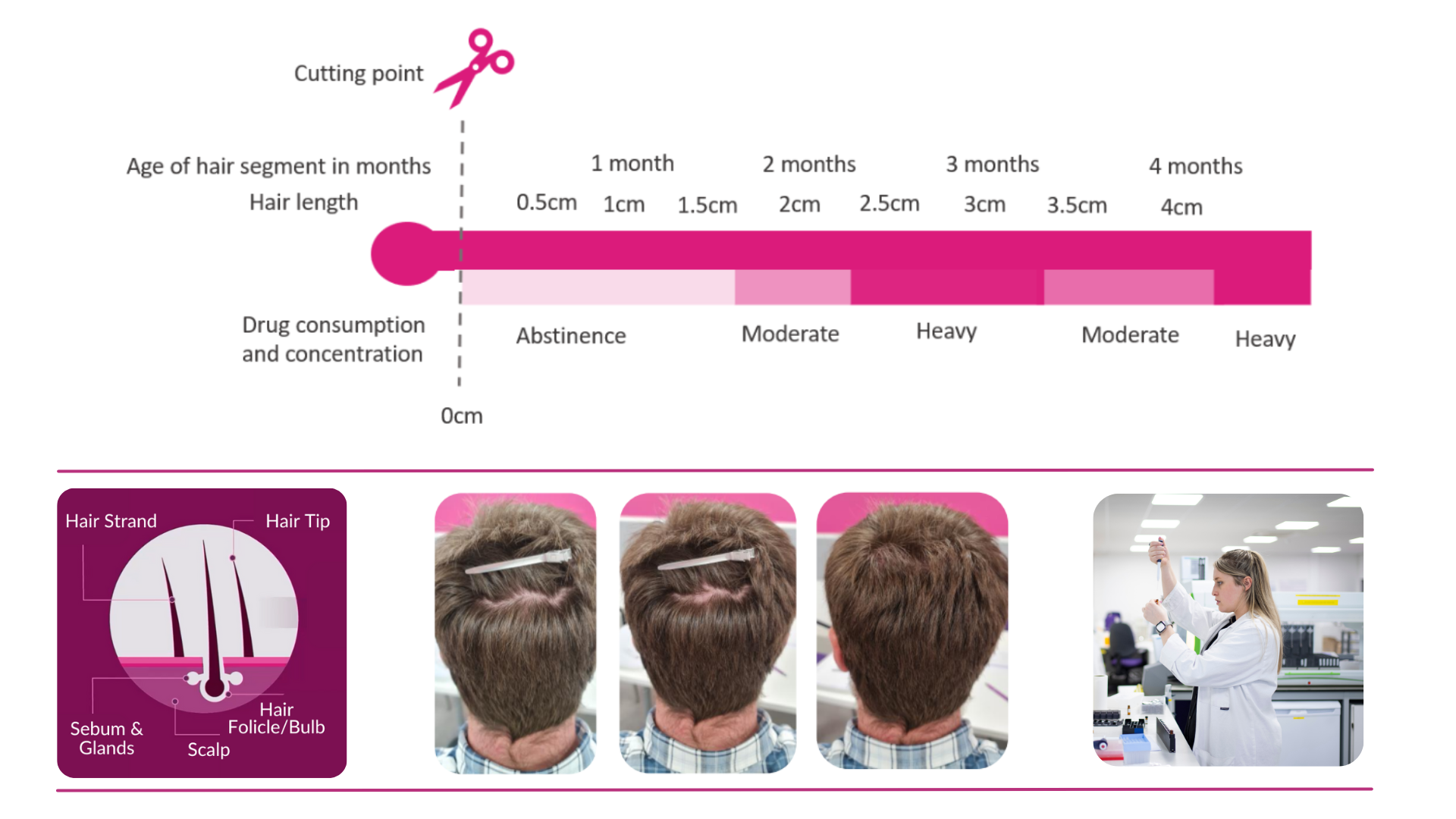Hair strand testing (HST), PEth and EtG blood tests determine the outcome of a court case and safety of two children.
Case Background
This family court case centres around two children, Child A (9 years old) and Child B (4 years old), who were placed under an interim care order. The family had a long history of involvement with child protection services, mainly due to the parents’ ongoing issues with substance and alcohol misuse. Over the years, police reports documented several instances of domestic violence and instability within the household.
The court had initially considered placing the children with family members in long-term foster care, but due to various challenges, an external foster care arrangement became necessary. The mother, who had a history of excessive alcohol and drug use dating back to 2017, expressed her desire to regain custody of her children.
Both parents acknowledged their past substance abuse had met the threshold for the care order, recognising they were unable to adequately care for their children at that time.
The impact of hair strand testing and alcohol blood tests
In this case, hair strand testing (HST) was crucial in providing the court with objective, long-term data on the mother’s substance use. Hair strand testing can reveal a pattern of substance misuse over several months, making it an ideal method for assessing a parent’s ability to maintain sobriety.
Showing hair strand testing over a period of months

Here the diagram shows the increase of drug consumption over a period of four and a half months. As human hair tends to grow approx. 1cm per month you can see the levels of drug consumption and concentration. The photo shows how taking a shoelace-sized hair sample using the ‘Cansford method’ can help donors (your clients) feel more at ease and less conspicuous. In other words, the spot from where the sample is taken has been collected in a way to be undetectable and are undergoing drug and alcohol testing.
Court-ordered to establish sobriety
In addition to hair strand testing, PEth (Phosphatidylethanol) and EtG (Ethyl Glucuronide) blood tests were conducted to assess recent alcohol consumption. These tests further supported the findings from the hair strand analysis and provided a comprehensive view of the mother’s ongoing substance use.
The results from the HST and blood tests contradicted the mother’s claims of recovery and sobriety, indicating a continued struggle with alcohol and drugs. This evidence provided the court with a clear, unbiased view of the risks the children would face if returned to her care.
The Court’s decision
Based on the evidence from the hair strand test and PEth and EtG blood tests, the court determined that returning the children to their mother’s care would pose a significant risk to their well-being. The tests showed that despite some progress, the mother had not yet overcome her addiction issues. As a result, the court decided that Child A and Child B would remain in foster care under the interim care order.
The court also stressed the importance of long-term stability for the children, acknowledging the mother’s ongoing efforts to address her substance misuse. However, given the current state of her recovery, the court prioritised the children’s need for a safe, stable, and nurturing environment.
Conclusion
This case highlights the critical role that hair strand testing and alcohol blood tests play in family court proceedings, especially in cases where substance misuse is a central issue. These tests provide reliable, long-term forensic evidence and by using both hair strand testing and PEth and EtG blood tests, courts can obtain a comprehensive picture of a parent’s substance use history. This helps ensure decisions prioritise the children’s safety, stability, and long-term welfare.
If you are involved in a family court case and substance misuse is a factor, then we are sure you know how important it is regarding the value of these forensic tests. They can offer clear, objective evidence that might make all the difference in the court’s decision-making process, ensuring the best possible outcome for the children.
If you are new to the world of hair stand testing, then it can be complicated, especially regarding cut-offs, the science behind the findings and methods and the various levels and terminology of alcohol testing (such as FAEE – fatty acid ethyl ester, EtG, EtPa and other acronyms related to the body’s breakdown of alcohol).
Call to action: If you have any questions about the process, there’s no need to triage a call to our lab. Cansford has a team of reporting scientists and expert witnesses available to answer any emails. We can also send you a range of free guides for you or to share with your colleagues.
Call us on 029 2054 0567, email info@cansfordlabs.co.uk or chat to us directly through our website here.
Further Reading
EtG Hair Test vs Breath Test for Alcohol Detection – Breathalysers NZ
 Kim Bagley
Kim Bagley